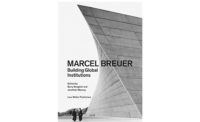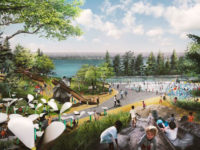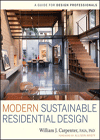The radical changes in today’s cultural institutions inevitably affect the architecture of these institutions. Libraries are no longer about books, art museums are not primarily about art, and Joshua Dachs, a prominent theater planning-and-design consultant, has recently questioned the need to ever build more theaters.
Many dramatic buildings have contributed to the success of the institutions they house, an outstanding example being, of course, the Guggenheim Bilbao by Gehry Partners, visited by over a million people a year since it opened two decades ago. But now a beautiful building is no longer enough: innovative programming geared to our evolving societies has become crucial. Financing operations, too, are critical.
Indeed, even the value of costly buildings is far from certain. The cancellations last year of the Metropolitan Museum’s new wing for Modern and Contemporary art by David Chipperfield and of the New York Philharmonic’s David Geffen Hall renovation, after a competition won by Heatherwick Studio and Diamond Schmitt, raise serious questions.
Consider the new ways in which the public is visiting cultural institutions. The National Endowment for the Arts recently revealed that 73 percent of Americans who visit art museums are doing so first and foremost to meet a friend or family member, and only secondarily to visit the art. According to the research of La Placa Cohen, a strategic-marketing firm, in the 21st century, the very notion of what culture is has been expanded to include street fairs and food and drink experiences.
An example of this new emphasis is the Tate Modern’s Switch House wing, completed in 2016 in London. It is 60 percent bigger than the original building, but 40 percent of the space in the Herzog & de Meuron addition is consigned not to the exhibition of art (in this building, exclusively performance art) but to cafés, theaters, and other areas for social interaction. The Museum of Modern Art’s current renovation and expansion by Diller Scofidio + Renfro follows a similar trajectory, adding 25 percent more public space, a new store, and an espresso bar, and only 30 percent more exhibition space.
Performance venues face a similar issue: programming that will attract younger audiences is more critical to long-term success than a striking new building. And, again, financial support for ongoing operations goes hand-in-hand with programming. The League of American Orchestras reports that attendance at performances of classical music, which declined from 2000 to 2014, is now on an upswing in both the U.S. and Europe. Ideas about programming must be reconceived to retain these new audiences, with their changed patterns of behavior; museums and libraries are in fact ahead of performance venues in this regard. The need for adequate funding of programming and maintenance—so often not considered carefully until it is too late—is a prime lesson of my book Chaos and Culture: RPBW and the Stavros Niarchos Foundation Cultural Center in Athens, published last May.
The entire $860 million cost of the new opera house, national library, and park in Athens, designed by Renzo Piano Building Workshop, with the landscape by Deborah Nevins, was assumed by the Niarchos Foundation. But the debt-strapped Greek government was unable to honor its commitment to pay for running the center. Fortunately, the foundation stepped in with a $50 million grant over five years, to prevent a shutdown.
Not every cultural institution is so lucky. A national study asserts that between 1998 and 2004, $24 billion was spent in the U.S. on the construction of cultural buildings, many of whose futures became uncertain because of crippling operating deficits. Among these were the Kimmel Center for the Performing Arts in Philadelphia, by Rafael Viñoly (from its opening in 2001 until 2011, it incurred an annual debt of $14.5 million), and the Adrienne Arsht Center in Miami, by Pelli Clark Pelli (where deficits of $600,000–$700,000 in 2010 and 2011 indicated a need for ongoing government support). The Winspear Opera House by Foster + Partners in Dallas closed its first season, 2009–10, $1.5 million in the red, and they are still struggling.
The Frank Gehry–designed New World Symphony Concert Hall in Miami Beach presents an alternate picture. Many concerts at the 765-seat venue are briefer than the norm, are scheduled at off hours, and include visual projections. Free “wallcasts” present live concert screenings on the exterior, with surround-sound acoustics in the specially designed park by West 8, to increase the audience size by an average of 2,000 people. The hall’s finances are healthy, with annual subsidies, ticket sales, and a modest dip into the endowment.
Established institutions are making other changes in order to compete with smaller, more intimate venues that offer less costly tickets. One of these is National Sawdust in Brooklyn, a 150-seat artist-led concert center designed by Bureau V; another is the experimental performing space Soundbox in San Francisco. Large auditoriums are being built in unexpected locations, such as the Paris Philharmonie in the outlying northeast of Paris, by Jean Nouvel; La Seine Musicale, by Shigeru Ban, on an island in the Seine at the opposite end of the city; or the Niarchos cultural center, 2 miles from the center of Athens.
Even in Europe, where, until recently, local and federal governments assumed the cost of building and running cultural institutions, there are surprises. Since its 2008 inauguration, Snøhetta’s stunning Oslo Opera House has enjoyed tremendous popular success, both as a performance space and a destination for outdoor strolls on its gently sloping roof overlooking the waterfront. But higher than anticipated maintenance costs for the building, compounded by the federal government’s unexpected imposition of bigger pensions for performers, tore through the company’s balance sheet.
In Hamburg, Christoph Lieben-Seutter, director of the Elbphilharmonie, designed by Herzog & de Meuron, is cognizant of such issues. He wonders how this stunning concert hall, sold out for a year after its inauguration in early 2017, will fare three years from now when the novelty has worn off. Its annual nearly $7 million operations are currently funded by the local government, donations, and ticketing. The dramatic 26-story glass structure, poised on a 1940s brick former warehouse, includes among its other spaces two concert halls, a hotel, and condominium apartments, all of which enjoy panoramic views of the harbor and the city beyond. Its construction, begun in 2007, cost more than 10 times the original estimate of $86 million, and was completed seven years late.
The Eli and Edythe Broad Museum in Los Angeles by Diller Scofidio + Renfro is one of many small private art museums that have been constructed and maintained by a single patron. Unlike many private museums—the Nasher Sculpture Center in Dallas, for one, which does not have an endowment from its original benefactor—the Broad has an endowment of $200 million. And the Glenstone Museum in Maryland is supported by a $1.25 billion foundation. Scheduled to open in October, the Glenstone’s expansion by Thomas Phifer and Partners places a series of pavilions in a 230-acre park designed by PWP Landscape Architecture. The museum’s new incarnation is expected to increase its visitor capacity from 25,000 to 100,000 per year.
Obviously, it is this kind of success—architecture that supplements the mission and public perception of an institution—that is envisaged by those currently hard at work to raise the $425 million for the ongoing construction cost of the 200,000-square-foot Shed in Hudson Yards, on the west side of Manhattan, also by Diller Scofidio + Renfro in collaboration with the Rockwell Group. It is based on the concept of flexibility—exemplified in Cedric Price’s unbuilt 1964 movable and reconfigurable structure for the Fun Palace—that also influenced the Centre Georges Pompidou by Piano and Richard Rogers in Paris, whose open spaces were unfortunately transformed into staid white cubes by Gae Aulenti less than 10 years after its inauguration. Zankel Hall, a 599-seat venue at Carnegie Hall designed by the Polshek Partnership, has almost never enjoyed the reconfiguration intended for it. Yet advancing the trend for flexibility is the design by REX for the new 90,000-square-foot Ronald O. Perelman Performing Arts Center now under construction at Ground Zero in Manhattan, which can be transformed from three basic spaces into at least 11 of varying sizes and configurations. Among many atypical uses, the theaters and lobbies will host yoga classes, and monthly tea dances. The grand stair is envisioned as a gathering place akin to the Metropolitan Museum of Art’s outdoor stairway.
In Hong Kong, the local government’s contribution of $6.4 billion for the construction of performance and cultural spaces in the West Kowloon Cultural District is evidently based on similar optimism about the power of high-profile architecture. Herzog & de Meuron’s M+ contemporary art and design museum will be among the first of these venues to open. However, questions persist about the Hong Kong government’s willingness to support maintenance and programming.
There is no such question about the financing of educational programs in mainland China, where city, regional, and federal governments (with the help of foundations and charities) build and financially support new cultural venues even in secondary cities—for example, DDB International’s Xi’an concert hall (2009) and Zaha Hadid’s Changsha Meixihu International Culture and Art Center (to open this fall). Both of these cities, as recently as 10 years ago, were without performing-arts facilities. The government also supports activities that will build new audiences throughout the nation.
These efforts have paid off handsomely. I have visited many of the elaborate theaters that were constructed throughout China starting in 2010; several were suffering immediately after their openings from poorly conceived, poorly performed programs. In the decade since, however, programs and performances have attained high levels of quality, and Chinese orchestras have developed enormously. Scant audiences have mushroomed, thanks in part to strong marketing and sales techniques, including very affordable tickets (prices as low as $7.50, although they can go as high as $375) and the distribution of some free tickets. This remarkable progress provides a telling lesson in what can be achieved with the coordinated help of education and adequate financing.
Clearly, growing audiences for cultural experiences of all sorts do not guarantee the ongoing success of new cultural venues. Inventive architecture, vigorous and creative programming, and money to keep the lights on are all needed to ensure a favorable outcome. Like the teams behind the Shed and the Perelman center, architects who understand the broader audiences, expanded functions, and financial requirements of today’s cultural institutions are those who will continue to enjoy design opportunities.
The article has been updated to correctly note that the Glenstone Museum's visitor capacity is expected to increase from 25,000 to 100,000 per year.







